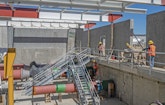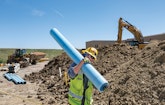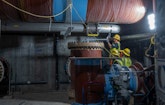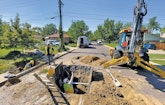
Denver Water process area engineer Jen Gelmini leads a small project tour of the Northwater treatment plant site. (Photography by Carl Scofield )
Sustainability is as central to Denver Water’s operations as the Rocky Mountains’ snowmelt is to its water supply.
An ecocentric mindset informs almost every aspect of the utility’s operations, as evidenced by its net zero energy usage, water reuse programs, LEED-certified...











